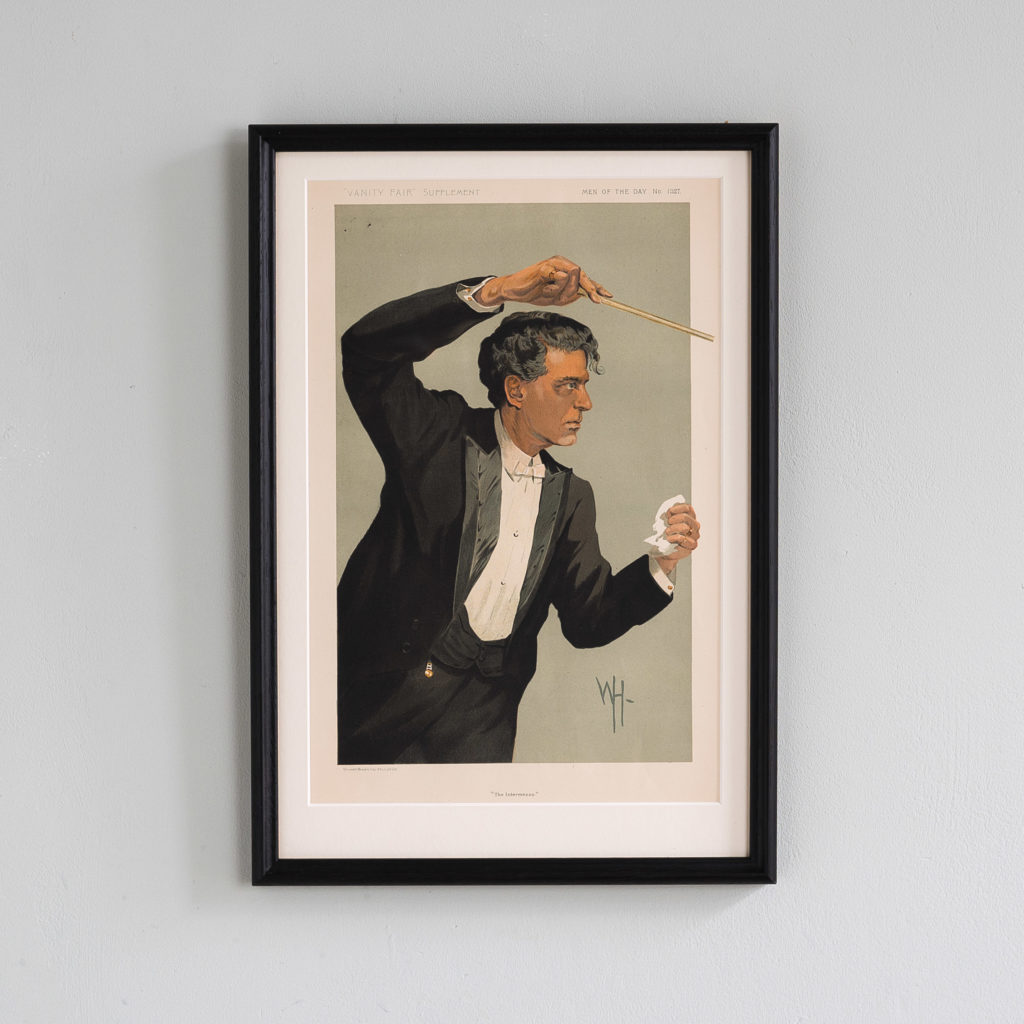Omnia Vanitas…
LASSCO has acquired a framed set of late Victorian and Edwardian caricature portraits from the original Vanity Fair, 1868-1914, depicting a range of figures from the world of art, politics, industry and law.
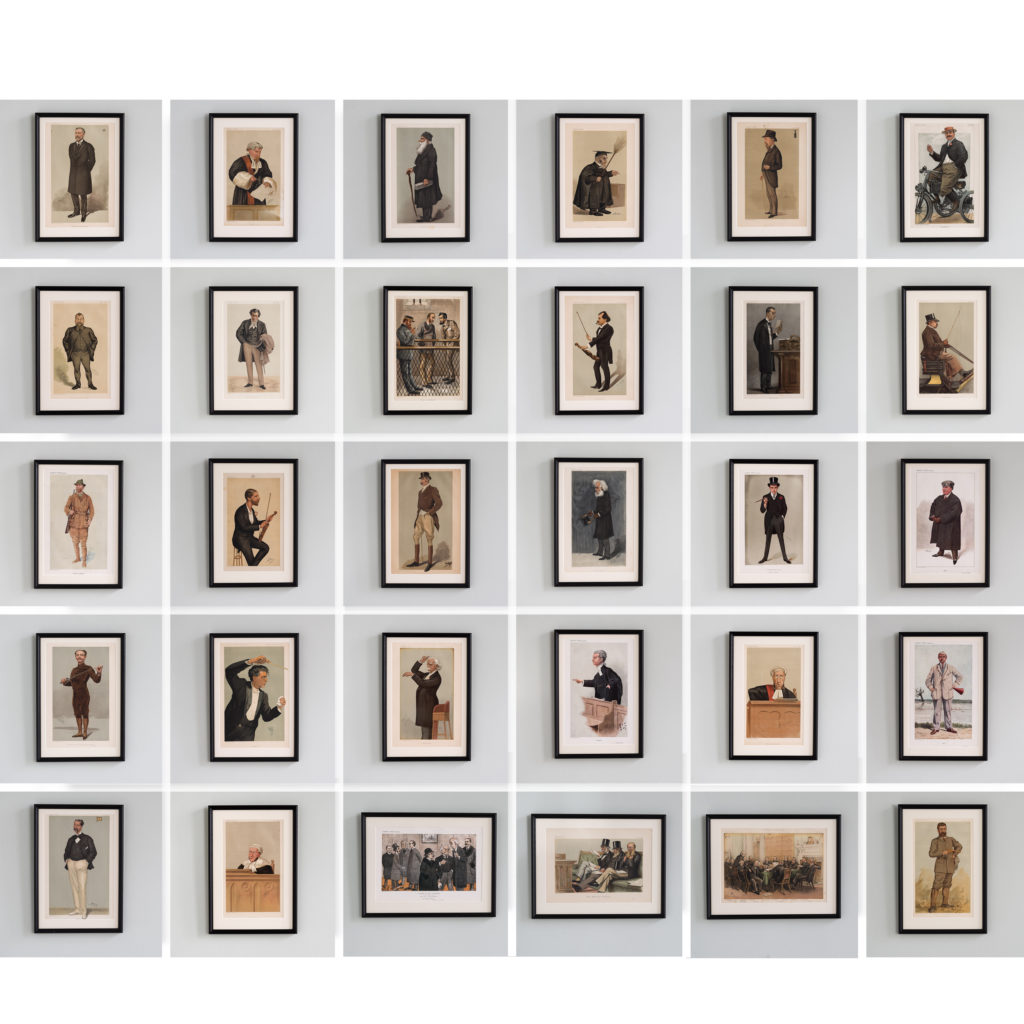
The original Vanity Fair was a weekly society magazine first issued by Thomas Gibson Bowles in 1868. It aimed to capture and hold up to examination the foibles of Victorian society life and featured commentary on the week’s social and political events.
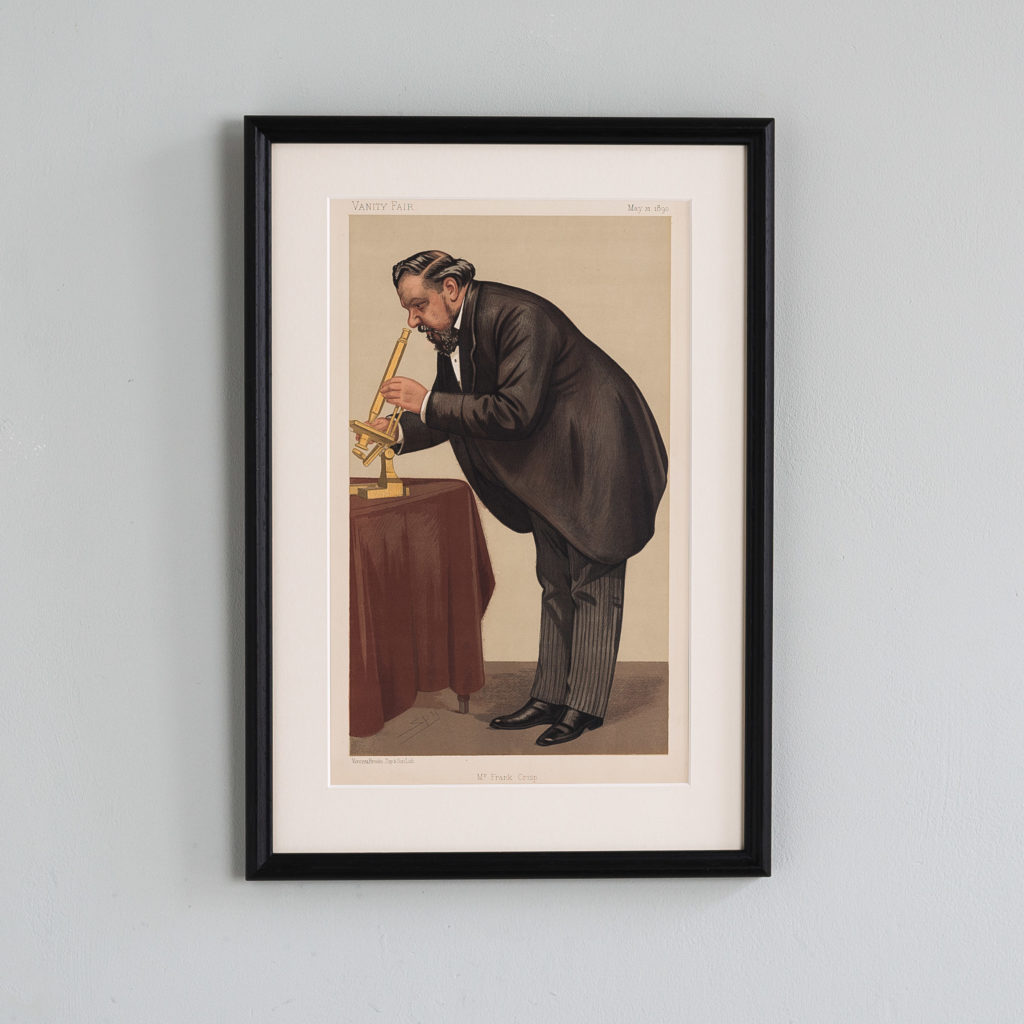
It also included theatrical and literary reviews and profiles of leading figures in the arts.
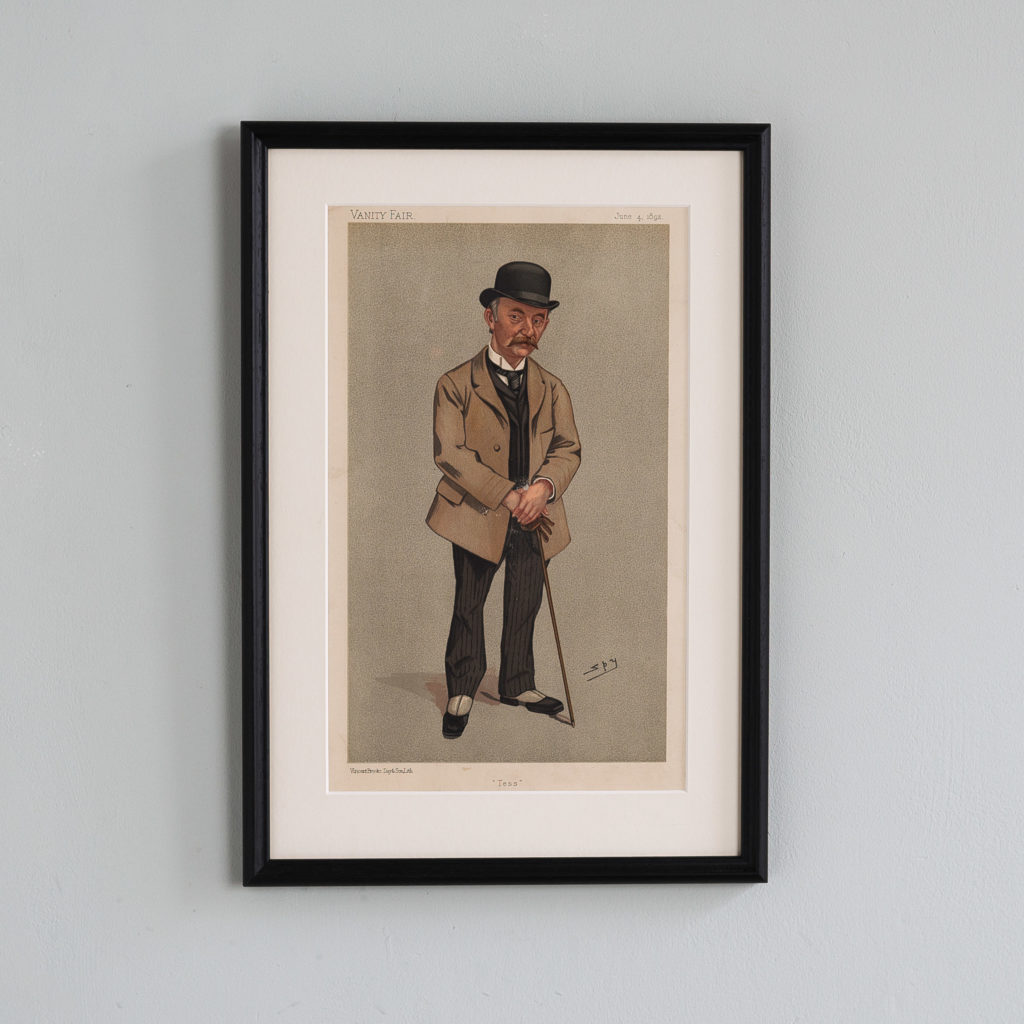
The magazine employed ‘celebrated’ contributors instead of members of staff and these individuals were often drawn from the fashionable sets of London. Despite this appealing model it was not until the publication of the first Vanity Fair caricature that the periodical found true popular success.
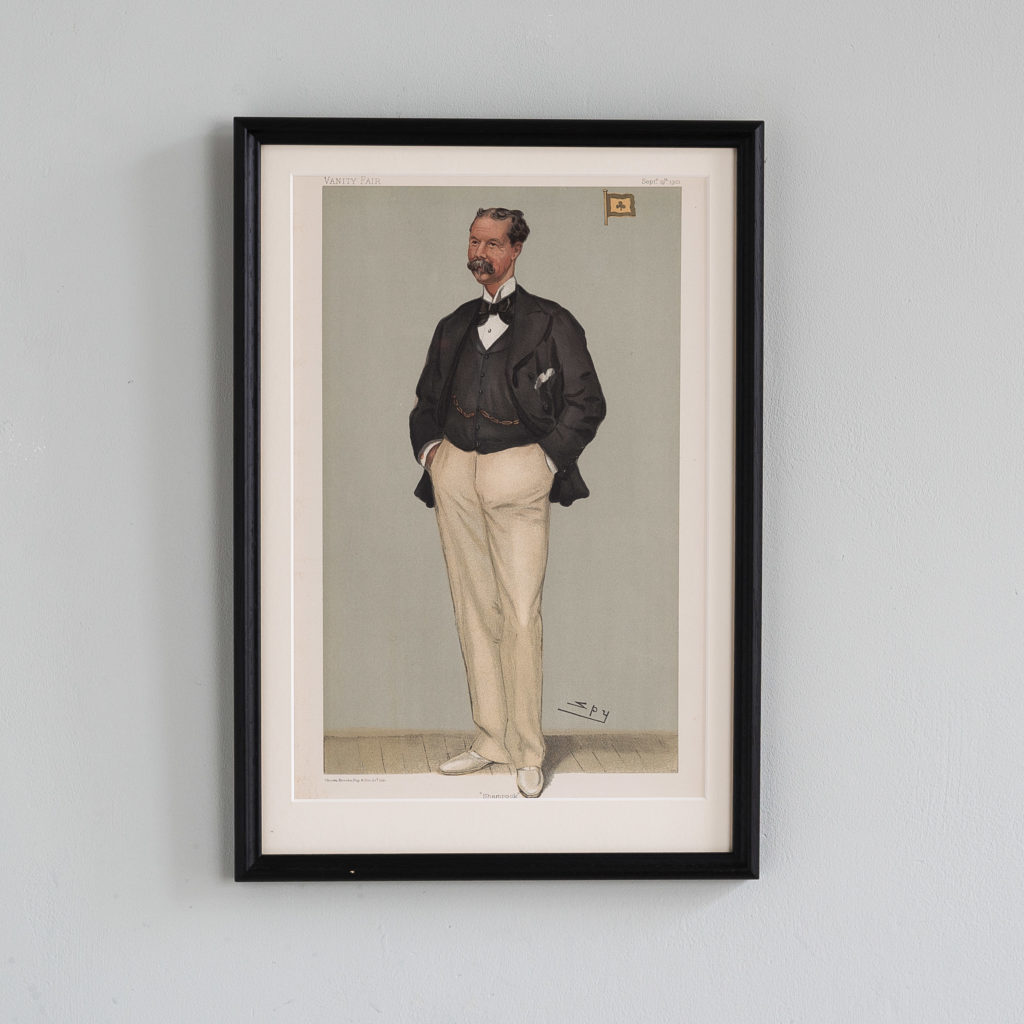
On the 30th of January 1869 Vanity Fair carried a full-page caricature of the Prime Minister, Benjamin Disraeli. This would be the first over 2300 caricatures published by the magazine.
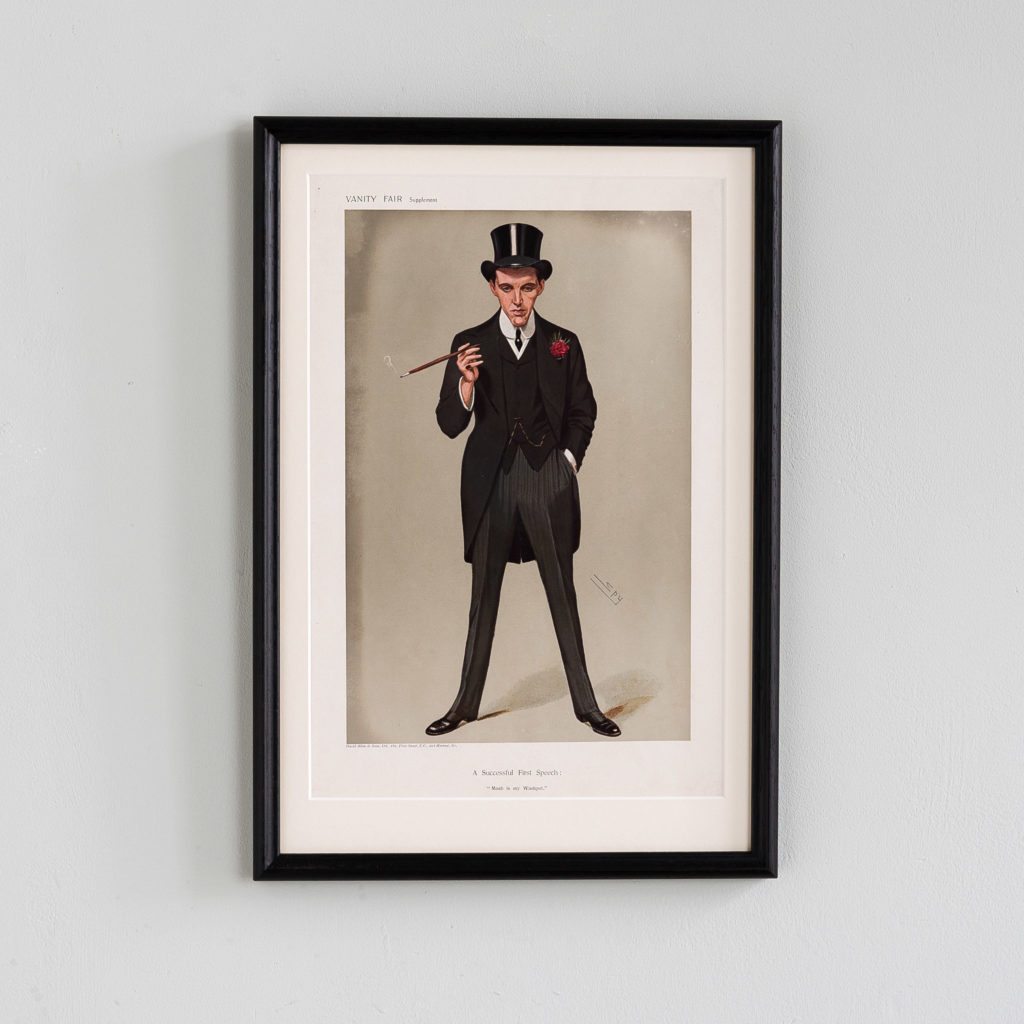
The images, created by Carlo Pellegrini (using the pseudonym Singe and later Ape) were reproduced by the artisan lithographer Vincent Brooks with pioneering technology and an unprecedented boldness of size and style.
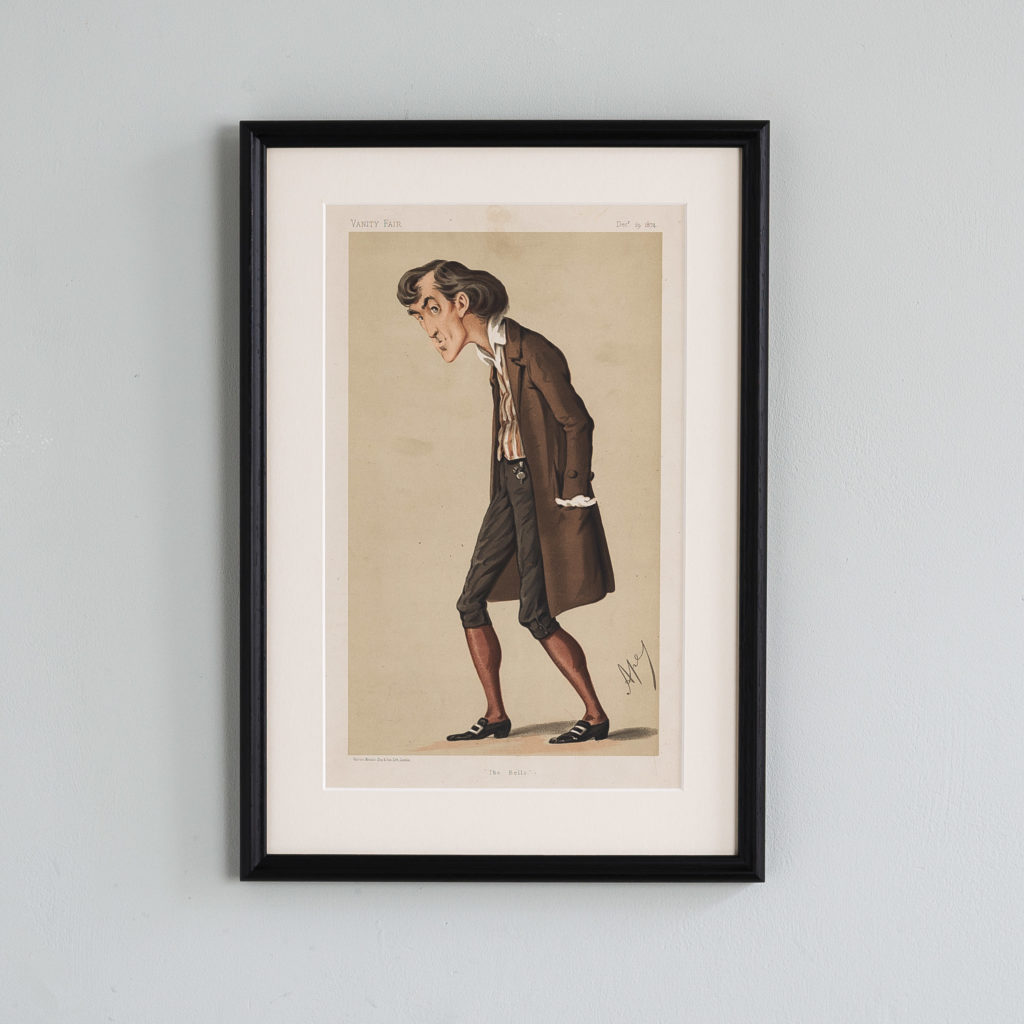
Pellegrini (Ape) changed forever the nature of English Caricature which, until his arrival, had been carried on in the brutal, savage, scurrilous manner of Gillray, Rowlandson and the Georgian satirists. Ape’s gentleness and pictorial wit endeared itself to the Victorian public and it became a secret object of aspiration among the great and the good to be made a ‘victim’ of a Vanity Fair caricaturist.
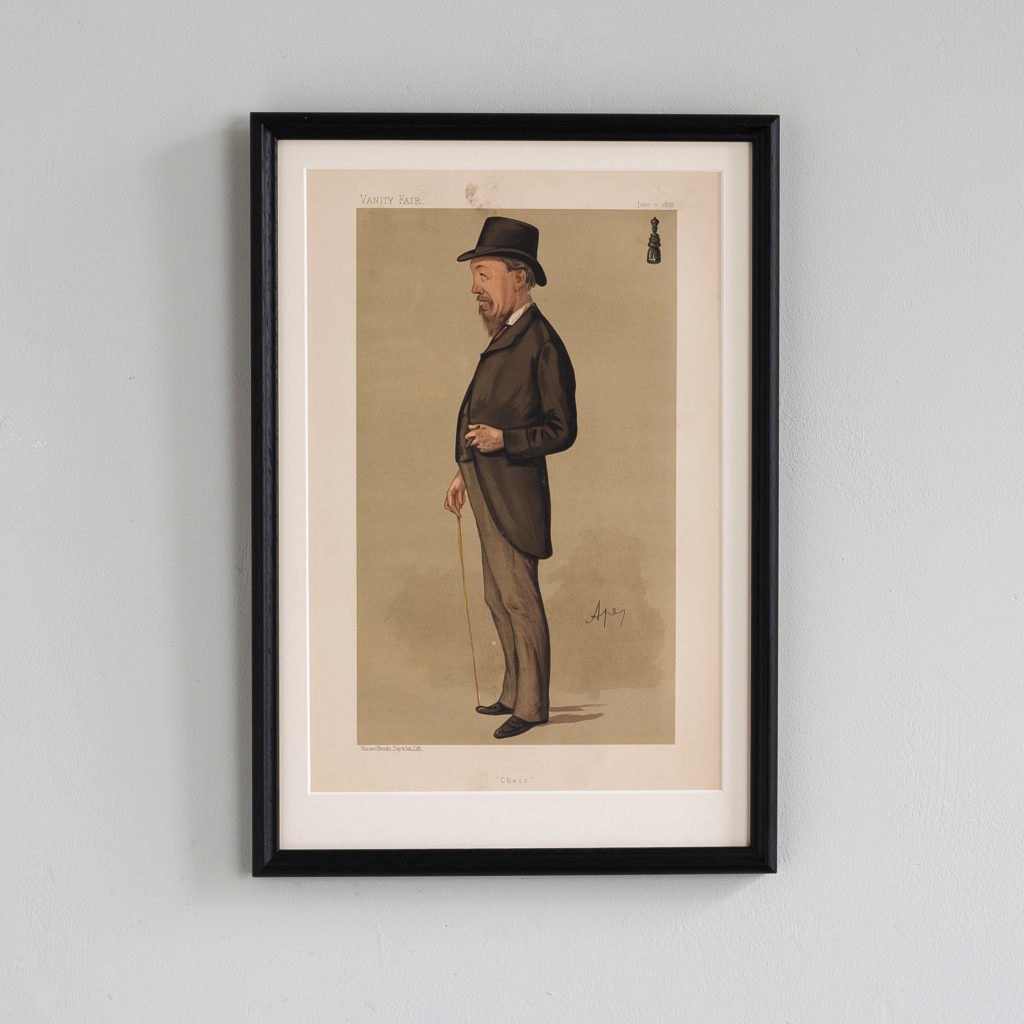
As the success of the magazine grew on the back of it’s portraits and caricatures they employed a number of guest artists including James Jacques Tissot, Andreo Ceccioni and Melchiore Delfico before largely settling on Sir Leslie Ward, who drew under the name of Spy.
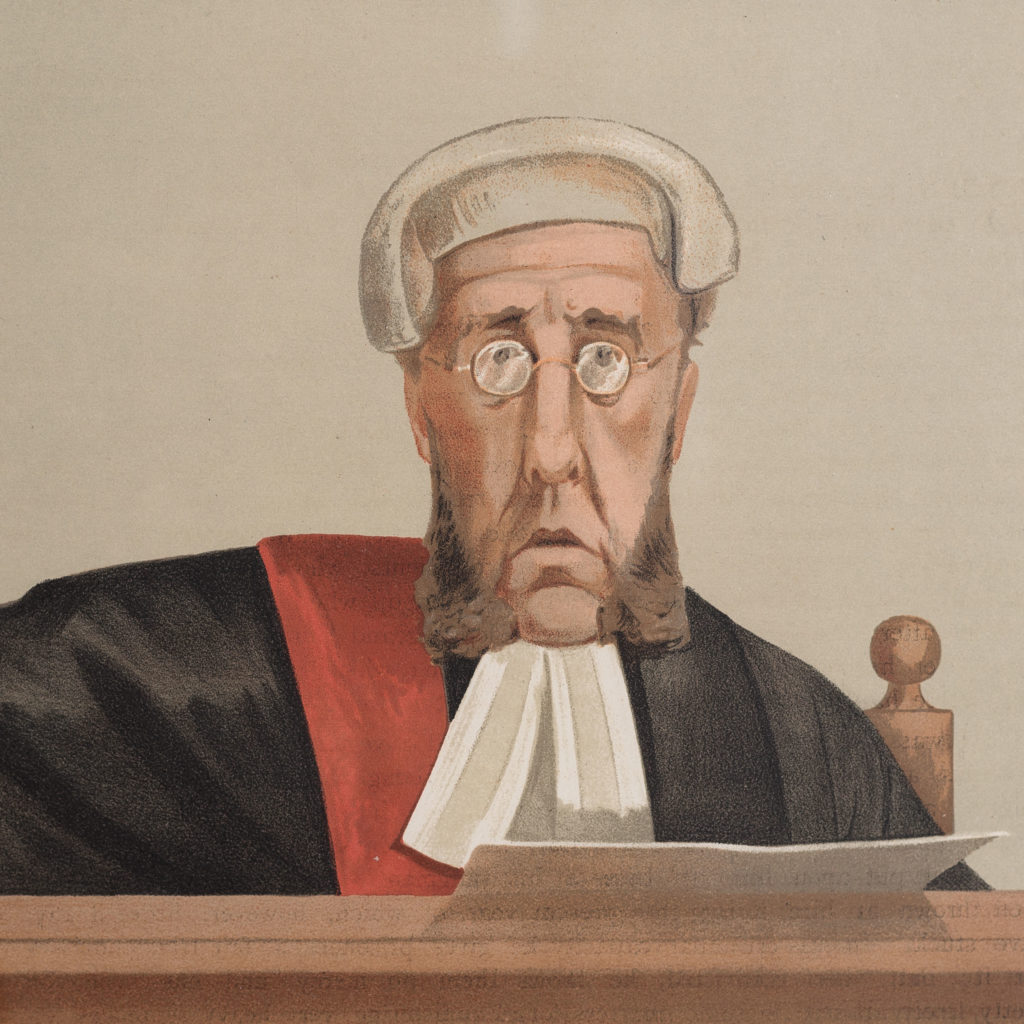
Spy’s caricatures would become a national institution in Britain. Spy was prolific and reliable where Ape had been mercurial and bohemian. Ward, an establishment man himself through his family connections, was at home in high society circles and was granted access to people and places that a jobbing cartoonist might not otherwise have been admitted.
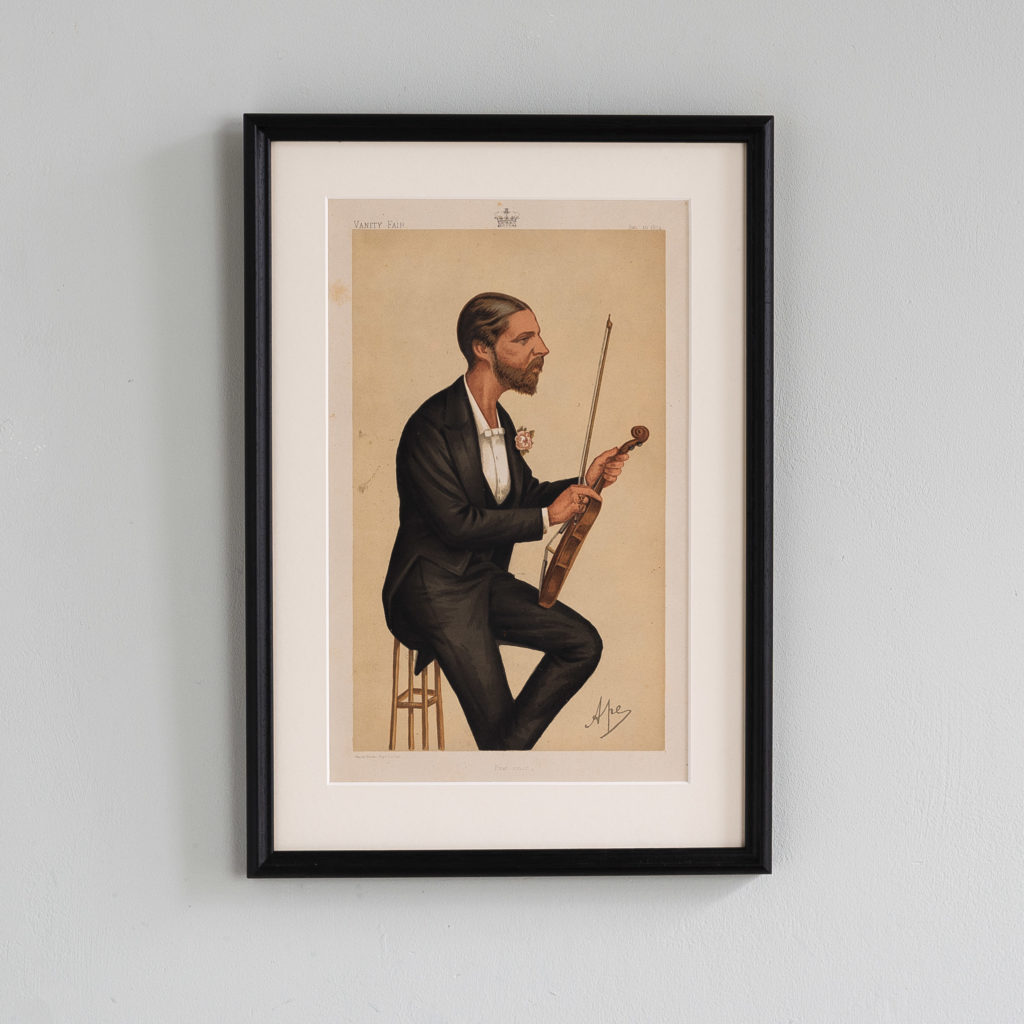
The caricatures are as much a portrait of the time as they are of the persons depicted. Despite a clear tendency to established form and tradition it was a time of white-hot change. Every aspect of the Modern world can be traced in the occupations of the sitters. Legal reform, Nationalism, Scientific investigation, technological development, artistic experiment, military and naval professionalisation and the development and codification of international sport.
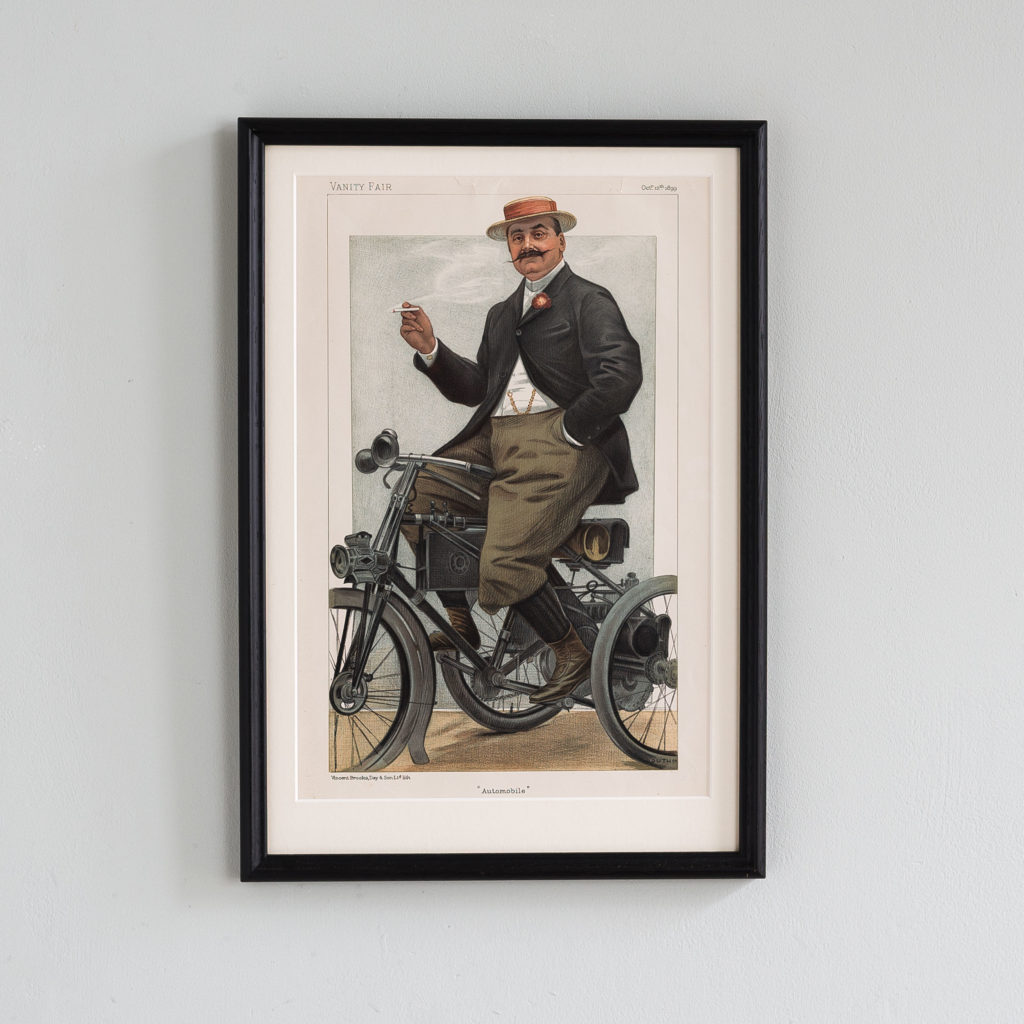
Sold by Thomas Gibson Bowles to Arthur Evans in 1889, Vanity Fair continued to publish its famous portraits until both the magazine and the confident, optimistic world it depicted, what the French would call La Belle Epoque, came to an end at the beginning of the Great War in 1914 when the magazine ceased production.
